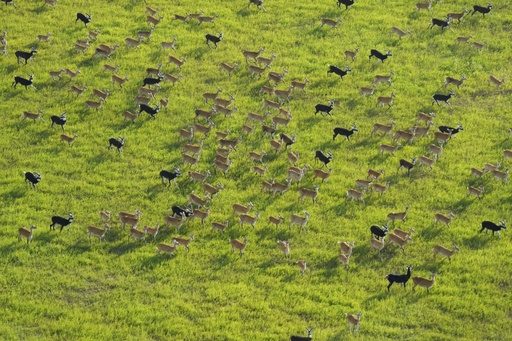
CALI, Colombia — Recent evaluations of global efforts aimed at safeguarding plants and animals show only marginal advancements, while a number of species are still facing significant declines. This information emerged from two reports presented during a significant United Nations biodiversity summit held in Colombia on Monday.
One of the reports issued by the United Nations Environment Programme (UNEP) specifically reviewed the global strides made since the last biodiversity assessment in 2020, when 196 nations reached a pivotal agreement to protect biodiversity across 30% of the Earth by the year 2030.
The ongoing biodiversity summit in Cali acts as a follow-up to the 2022 agreement made in Montreal, which outlines 23 strategic measures aimed at halting and reversing the loss of nature. Among these measures is the commitment to safeguard 30% of the planet’s surface and 30% of depleted ecosystems by 2030.
According to the UNEP report, while some progress has been noted regarding the commitments made by various countries, there is a pressing necessity for an expedited expansion of protected areas over the next six years in order to achieve the outlined objectives. The findings indicate that currently, 17.6% of terrestrial and freshwater ecosystems along with 8.4% of global oceanic and coastal regions are classified within protected and conserved zones.
“The increase in protected area coverage since 2020—equivalent to over twice the area of Colombia—deserves acknowledgment,” stated UNEP in its press release. “However, the growth is less than half a percentage point in each of the respective categories.”
To fulfill the global target by 2030, a land area similar in size to Brazil and Australia combined, alongside a marine area larger than the Indian Ocean, must be effectively protected and preserved, as noted by UNEP. “It is equally crucial that these areas are not only established but are also effective and considerate of the local populations who often serve as their most vital guardians,” remarked UNEP Executive Director Inger Andersen. “The report highlights that while some progress has occurred over the last four years, we are still falling short in terms of speed and scope.”
UNEP’s report incorporates the latest data from governmental sources and various stakeholders involved in conservation initiatives.
“The ’30 by 30′ initiative is an ambitious yet realizable target, provided that the global community collaborates effectively across borders, demographics, and sectors,” stated Grethel Aguilar, Director General at The International Union for the Conservation of Nature (IUCN).
On the same day, the IUCN disclosed that approximately 38% of the world’s tree species are facing extinction risks. The organization’s Red List of Threatened Species now includes a total of 166,061 species, with 46,337 of those recognized as endangered. Trees represent over a quarter of the endangered species list, with the number of at-risk tree species surpassing the combined total of threatened birds, mammals, reptiles, and amphibians, according to IUCN.
Tree species are under threat in 192 nations globally, with island ecosystems bearing the highest risk due to rampant deforestation driven by urban development and agricultural needs, along with invasive species, pests, and diseases. “This extensive evaluation offers the first global perspective on the conservation status of trees, facilitating more informed decision-making for conservation efforts and timely actions where they are most needed,” commented Malin Rivers, lead for the Global Tree Assessment at Botanic Gardens Conservation International.
The ongoing loss of trees poses a grave threat to countless other species of plants, fungi, and animals, as emphasized by IUCN.
Additionally, the report brought attention to the declining status of the Western European hedgehog, now classified as “near threatened,” with its population having decreased by an estimated 16 to 33% over the past decade. Some areas, such as Bavaria in Germany and Flanders in Belgium, have witnessed more drastic declines of up to 50%. This reduction in numbers can be attributed largely to increasing human pressures, particularly the degradation of rural habitats brought about by intensified agricultural practices, infrastructure development, and urbanization.
